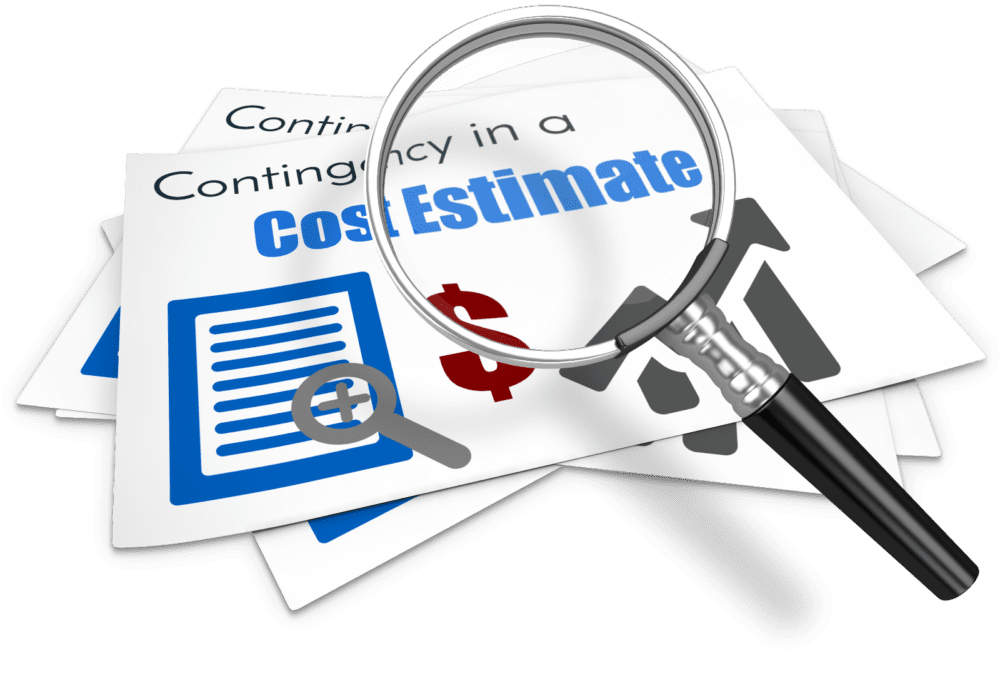Summary:
Have you ever reviewed a Cost Estimate of a project? Have you ever wondered what “Contingency” is in a Cost Estimate?
Do you know why a contingency reserve/ fund is allocated to a cost estimate?
Cost contingency is a reserved fund that is added to a base cost estimate to account for cost uncertainty. It is the estimated cost of “known-unknowns” risks that can affect the project.
The contingency reserve is not intended to absorb the impacts of scope changes, escalation, and unforeseeable circumstances beyond management’s control. It is money that is expected to be spent, hence, controlled.
What the video below to learn more about what Cost Contingency Reserve Fund is in a Cost Estimate, why it is allocated to a cost estimate, what is excluded from Cost Contingency, and how it’s been used.
Like this episode? Please share it so others can also benefit from it.
Want more training? Subscribe to Project Control Academy to receive complimentary training videos and resources delivered to your mailbox.
Project Control Quotes to Consider: Join Project Control Academy on Instagram for tons of great quotes.
Video Transcript:
Have you ever reviewed a Cost Estimate of a project?
Have you ever wondered what “Contingency” is in a Cost Estimate?
Do you know why a contingency reserve/ fund is allocated to a cost estimate?
In this episode, I am going to discuss what cost contingency is in a cost estimate and why it is required.
Before going into the details of contingency reserve in a cost estimate, let’s have the same understanding of what a “cost estimate” is.
Cost Estimate
A cost estimate is the estimated cost of a project, program, or operation. It is the prediction of the quantity, cost, and price of the resources required by the scope of a project.
On large projects, the person producing the estimate will often be a specialist cost estimator. On smaller projects, a project manager, a project controller, or a business analyst, might prepare it.
The general expectation from a cost estimator is to produce an estimate that is the most likely outcome of the total cost. However, this is a common misconception, because the base estimate that a cost estimator produces will not usually generate a total estimate that is the most likely outcome of the total cost.
Until the project is completed, no one can be certain exactly how much the cost will be. The basis for the estimate and the calculations used to turn that information into a cost are both uncertain. These uncertainties are risks to the project. To account for cost uncertainty, contingency reserve may be added to a cost estimate.
But what is a contingency reserve in a cost estimate?
What is Cost Contingency Reserve?
The Association for the Advancement of Cost Engineering (AACE International), has defined contingency as:
“An amount added to an estimate to allow for items, conditions, or events for which the state, occurrence, or effect is uncertain and that experience shows will likely result, in aggregate, in additional costs.”
According to PMBOK Guide, 5th Edition,
“Cost Contingency reserves are the budget within the cost baseline that is allocated for identified risks, which are accepted and for which mitigation responses are developed.”
Therefore, contingency reserve is an estimated amount added to a project base estimate to cover the inherent project risks.
The cost contingency reserve is the estimated cost of risks that probably would occur based on past experience, but with some uncertainty regarding the amount. The cost estimator is aware of such risks, and based on experience, can even estimate their probable costs. That’s why cost contingency reserve is often referred to as the estimated cost of “known-unknowns” that can affect the project.
An example of the known-unknown estimated costs is the cost of rework on some project deliverables. The rework could be anticipated, but the amount of this rework is unknown. The contingency reserve is estimated to account for this known-unknown amount of rework.
To learn how you can develop a risk-based contingency for your cost estimate, please check out this training.
What is “Excluded” from Cost Contingency?
It is important to note that contingency reserve is only meant to cover the known-unknown costs that would be in the project scope of work but had not yet been defined.
This means that cost contingency doesn’t include the project scope changes. Such changes should be managed through the change management system.
Contingency also doesn’t include unexpected, extraordinary events such as natural disasters and labor strikes.
Other items such as design allowances, escalation, management reserve, and profit are also EXCLUDED from the cost contingency. More details about these items will be covered in another episode of Project Control Mastery.
With the understanding of cost contingency reserve and why it is allocated in the total project cost estimate, the question is whether the contingency reserve fund will be utilized in the course of project execution or will be set aside?
The Use of Contingency Funds
There is a tendency for those not involved or unfamiliar with cost estimate development to view contingency as an inflated reserve fund to increase the chance of finishing the project on budget or making some profit. Some may try to limit contingency to a fixed percentage of the base estimate or in some cases delete it entirely.
However, contingency reserve forms an essential and integral part of the cost estimate; it is neither a potential profit nor is used for sandbagging the estimate. It is used to cover the cost of potential risks and uncertainties in the project. Therefore, Contingency reserve is released or consumed by the project team as each of the risks is passed.
Contingency is usually included in budgets as a control account. As risks occur on a project, and money is required to pay for them, the contingency can be transferred to the appropriate accounts that need it. However, contingency funds should not be spent without proper cost control.
How is contingency properly utilized and managed?
Well, there is no generally accepted approach to contingency management. Some organizations place it under the control of the project manager. Some hold it centrally and demand a careful justification for funds to be released. Others delegate parts of the contingency down to management, holding some at the business level, some at the project level, and some at the work package level. These are details that depend on an organization’s general management practices and its cost management systems.
The bottom line is that contingency should be expected to be expended in the development of the project, but with proper and authorized cost control.
In summary,
Cost contingency is a reserved fund that is added to a base cost estimate to account for cost uncertainty. The contingency reserve is not intended to absorb the impacts of scope changes, escalation, and unforeseeable circumstances beyond management’s control. It is money that is expected to be spent, hence, controlled.
Stay tuned for the next episodes of Project Control Mastery to learn more about cost contingency, how contingency reserve is estimated and what its difference is with management reserve, escalation, and design allowances.
If you have any questions or comment about this episode, please submit them down below. Also, if you liked this episode, please hit the like button and share it with your connections.
About the Author, Shohreh Ghorbani
 Shohreh is the founder and director of Project Control Academy, the leading provider of comprehensive online training programs in Project Controls. Shohreh has served tens of thousands of professionals and several international corporations build their technical Project Controls knowledge and shave off years of trial and error in learning the vital skills in controlling their projects.
Shohreh is the founder and director of Project Control Academy, the leading provider of comprehensive online training programs in Project Controls. Shohreh has served tens of thousands of professionals and several international corporations build their technical Project Controls knowledge and shave off years of trial and error in learning the vital skills in controlling their projects.
Shohreh is a licensed project management professional (PMP) recognized by Project Management Institute (PMI) and holds a Master of Science in Industrial Engineering.
Connect with Shohreh via Facebook, Linkedin, Instagram, iTunes, YouTube


















